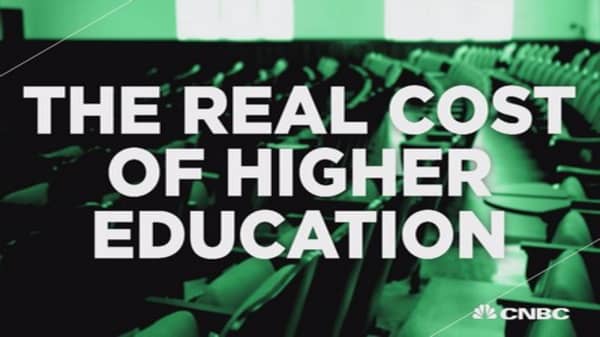Financial support for college students has long been based on how well they perform in the classroom. Now, for public colleges and universities, it's their turn to be graded.
From Maine to Hawaii, some 36 states are allocating money for higher education based, in part, on performance measures designed to reward schools that raise graduation rates, award more high-tech degrees and better prepare students for the job market.
Proponents of the idea say that, as state budget cuts have forced lawmakers to make tough choices, it only makes sense to reward public colleges and universities that get the most bang for every taxpayer buck. But critics of these schemes say they don't work, and can even produce unintended consequences that end up hurting students in the long run.
"It's appealing; it sounds great from a legislative point of view if you're selling this to your constituents," said Ray Franke, a higher-education researcher at the University of Massachusetts, Boston. "But the idea has been implemented in Europe and other countries, and for the most part it's ineffective."
Read MoreWhy does a college degree cost so much?
That was the conclusion of a 2013 University of Wisconsin study that looked at the impact of performance-based higher education funding on the number of students who completed their degrees at two- and four-year programs between 1990 and 2010.
"There is no meaningful evidence of effectiveness," wrote Florida State University professor David Tandberg, one of the report's authors. "But we see a rush toward adoption. It seems as though there is something other than evidence at work here."
The idea of paying public colleges for performance isn't new. Tennessee rolled out the nation's first such program in 1979. But few other states adopted similar programs until the 1990s. By the 2000s, according to Tandberg, several states dropped performance funding.
Read MoreThe return on a college education can vary widely
But after the Great Recession unleashed one of the worst fiscal storms in generations, performance-based funding plans returned to statehouses across the country. Since the recession, states have closed some $425 billion in budget shortfalls, according to the Center on Budget and Policy Priorities, a research institute. And they're not done cutting yet.
The budget squeeze brought big cuts in funding for higher education. By 2013, states had cut spending to $2,353 per student—about 28 percent less than in 2008, according to the Center. Eleven states cut funding by more than one-third, and two states—Arizona and New Hampshire—cut spending per student in half.







